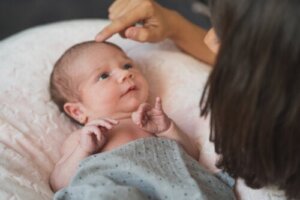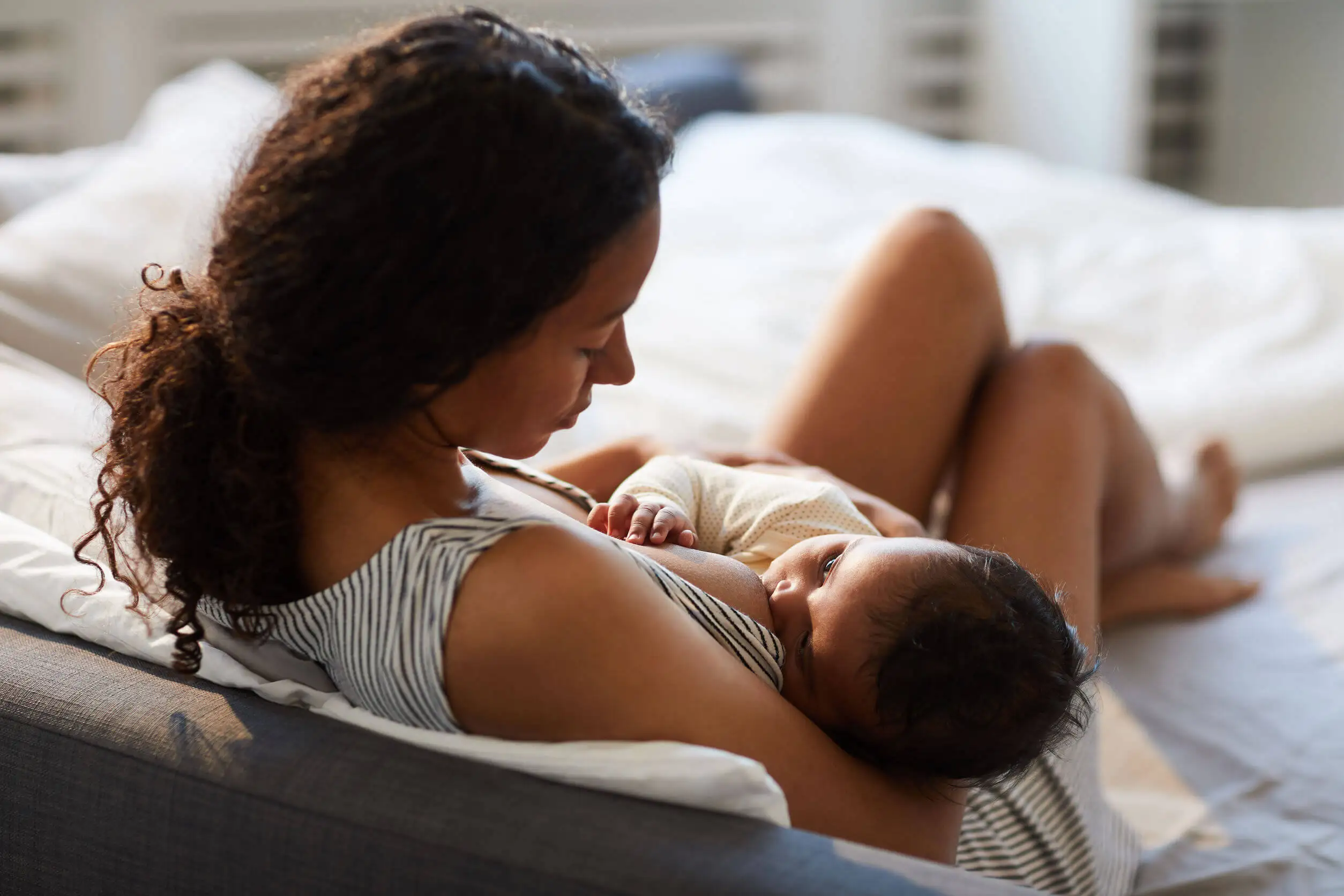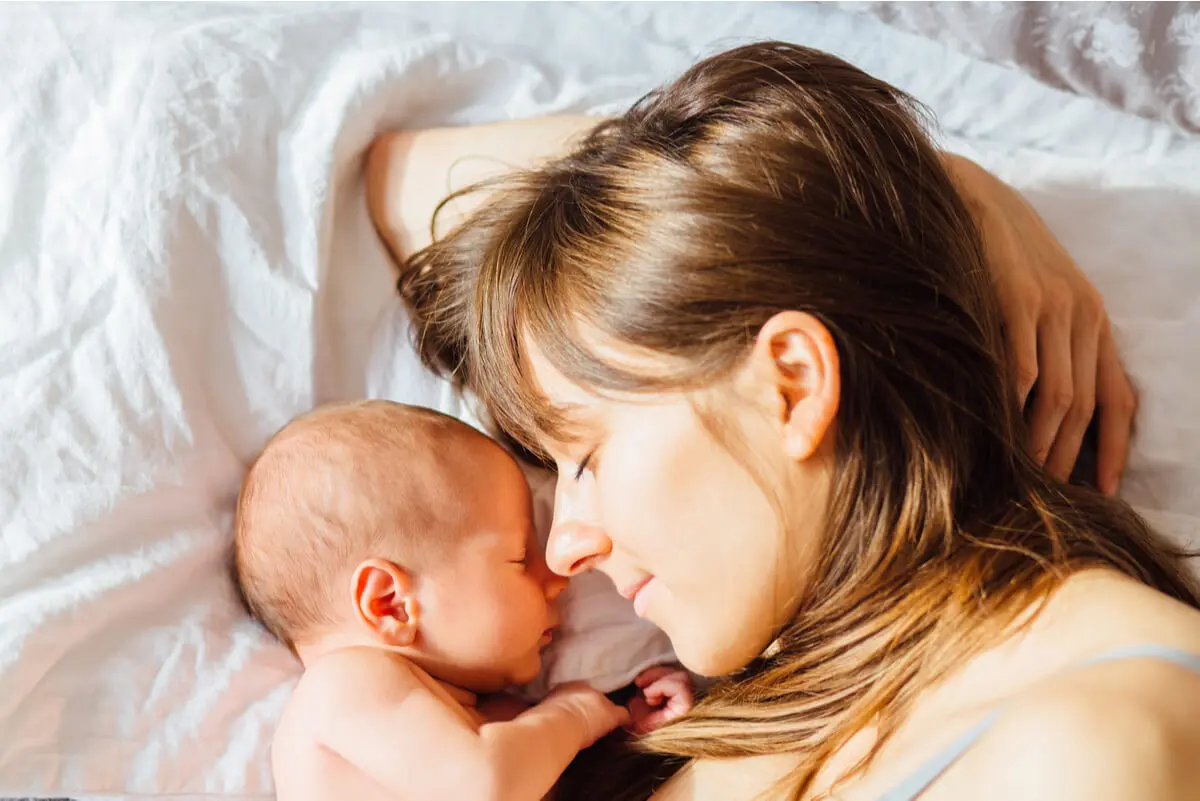When Do Babies Learn to Recognize Their Parents?


Reviewed and approved by the nurse Leidy Mora Molina
The moment when babies learn to recognize their parents is not easy to pinpoint. In fact, it’s not an instant as such, but rather this ability is the result of a process in which the child makes advances that aren’t always so noticeable.
Babies even have a certain ability for recognition from the moment they are born. However, this ability isn’t so developed or so evident that mom and dad can be absolutely certain that their little one knows who they are.
In reality, it doesn’t take long for babies to learn to recognize their parents. It may seem like an eternity to parents, but the truth is that this happens just a few months after they are born. How does this process happen? When is it completed? We’ll tell you all about it here.
Early development
Babies are born with their five senses already established, but they’re not yet fully developed. Sight, in particular, is quite limited in a newborn. At first, they only see blurry lumps and can barely distinguish between light and dark.
If the light becomes too bright, the baby will turn his or her little head. However, it can only perceive what’s at a distance of 25 centimeters or less. This seems to be the distance between the mother’s face and the baby when breastfeeding, or the distance between the father’s face and the baby when the baby is being cradled.
The good news is that even from birth, babies have the ability to recognize their parents, at least by voice. They have heard it since they were in the womb, and so it sounds familiar.
They also recognize their mother by her scent. If the father carries them frequently, they will also become familiar with his scent and recognize him by it.

Hearing and sight are the senses they use at the beginning to recognize their environment.
When do babies recognize their parents?
If the parents talk a lot to the baby during the time in the uterus, the baby will recognize them much more easily by their voice when he/she is born. It’s clear that babies are able to recognize their parents, to some extent, from birth. But when are they able to recognize them by sight?
Babies’ ability to recognize faces will depend on how often they are exposed to them. In other words, the more they see a face, the more likely they are to begin to recognize it. In the beginning, it’s important to bring your face close enough for the baby to perceive it.
The child is able to recognize his or her parents by sight after the first month of life, as long as he or she sees them frequently. At that age, they’re already able to identify people who appear regularly and differentiate them from those who seem strange to them.
In any case, babies continue to evolve. By the eighth month, they’re already experts at identifying faces.
For the little one, the mother or whoever takes her place is the most important person in the world and the one he or she will recognize best. If the father spends a lot of time with him or her, he will also occupy a very prominent place.
We think you may also enjoy reading this article: What’s “Baby Talk” and How Does it Benefit Babies?
The evolution of skills
Although babies are able to recognize their parents by two months of age, they only manage to do so when they see faces from the front. When they see the face in profile, they will have great trouble identifying it. That ability will appear at six months.
This was discovered in a study conducted by Chuo University in 2018. In this research, the behavior of 14 babies, aged between 3 and 8 months, was analyzed. This allowed concluding that they only identify faces in profile until after half a year of life.
The study also indicates that not all babies are the same and that some manage to recognize faces in profile a little earlier, while there are those who manage to do it later. It’s only quite later that babies are able to recognize their parents whether their backs are turned or far away.

Facial recognition improve with time
By six months of age, toddlers are not only able to recognize their parents from the front and from the side, but also identify family members and people they see often. At this age, they already clearly know who a stranger is.
If, at 12 months, the child does not seem to identify the people he or she sees frequently, it’s important to discuss this with their pediatrician. At this age, it’s not only normal for them to recognize faces, but also objects. This is the age of the favorite toy, which they’re able to identify above all others.
Some babies begin to show some anxiety towards strangers around 8-9 months of age. This anxiety is expressed as nervousness, distrust, or shyness when they see a person they don’t recognize.
Like this article? You may also like to read: When and How to Add Cucumber to Your Baby’s Diet?
The emotional aspect of face recognition
Babies begin to recognize their parents from birth, but this skill is refined over time. In the beginning, it’s very important for parents to talk to them by looking at them head-on and at close range.
By four months, parents will notice that their baby not only identifies them, but is happy to see them. They may also cry when they move away.
At this point, babies establish a close bond with their caregivers.
All cited sources were thoroughly reviewed by our team to ensure their quality, reliability, currency, and validity. The bibliography of this article was considered reliable and of academic or scientific accuracy.
- Reyes Platas, D. I. (2021). Estudio del complejo de animación ante la presencia activa y pasiva del cuidador en bebés de 2 a 8 meses de edad (Master’s thesis).
- Ichikawa, H., Nakato, E., Igarashi, Y., Okada, M., Kanazawa, S., Yamaguchi, M. K., & Kakigi, R. (2019). A longitudinal study of infant view-invariant face processing during the first 3–8 months of life. Neuroimage, 186, 817-824.
- Herrera, M. M. (2014). Psicopatología y “teoría de las relaciones objetales”. Revista de Ciencias Sociales, (144).
This text is provided for informational purposes only and does not replace consultation with a professional. If in doubt, consult your specialist.








